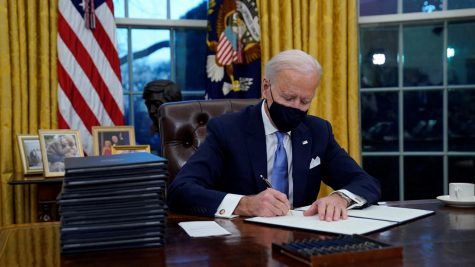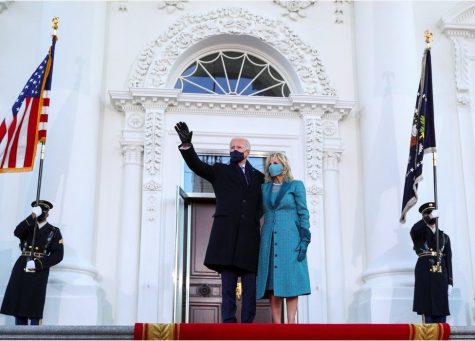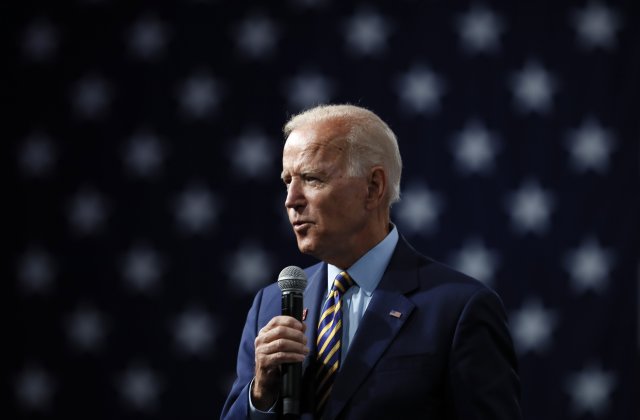The Start of the Biden Presidency
Just under a month ago, on a cold winter’s day in D.C., Joseph R. Biden raised his right hand to the air, rested his left on the Biden family bible, and recited the same oath uttered by every president since our nation’s founding. He swore to serve, to protect, and to defend the constitution of the United States, a promise which, under the office’s previous tenant, was actively combatted. It was this act of power in transition, colored, but not diminished, by the Capitol Raid of January 6th, that left so many Americans (myself included) awestruck at the endurance of our democratic process. After all the turmoil, the bloodshed, the blatant disregard for our country’s founding principles of responsible governance and popular rule, a new era is emerging.
 And while it’s enjoyable to view this moment romantically, to seek beauty and comfort in the ceremonial transfer of executive power, President Biden is still operating on a stage set by Trump. The legislative impact of Republican rule doesn’t linger at the door; it bounds several steps ahead into the new administration. Weakened foreign relations won’t magically snap back to place, wildlife preserves won’t shake off the damage of natural gas extraction, and a pandemic grievously mishandled for nearly a year, killing over 400,000 Americans, will never be reversed.
And while it’s enjoyable to view this moment romantically, to seek beauty and comfort in the ceremonial transfer of executive power, President Biden is still operating on a stage set by Trump. The legislative impact of Republican rule doesn’t linger at the door; it bounds several steps ahead into the new administration. Weakened foreign relations won’t magically snap back to place, wildlife preserves won’t shake off the damage of natural gas extraction, and a pandemic grievously mishandled for nearly a year, killing over 400,000 Americans, will never be reversed.
As disheartening as this reality may be, it’s clear, thus far, that the Biden administration has no plans of backing down from the challenge. In the past three weeks, the President’s filed about 29 executive orders, the bulk of which have been aimed at reversing those implemented under his predecessor’s term. That tallies up to about 31 revocations of existing orders at this point according to FiveThirtyEight.
Notably, he’s started the process of re-entering the Paris Climate Agreement, an accord composed of 190 nations with the intention of preventing global temperatures from surpassing 2°C relative to pre-industrial averages. He’s also established a variety of task forces and councils geared toward climate-conscious governance. Amongst the reversals, much to the chagrin of our neighbors to the north, was the cancellation of the Keystone XL oil pipeline, a petroleum transport infrastructure intended to link the Canadian natural gas hub of Alberta to its American counterpart, Texas. The subject of much protest from Native American and climate activists for nearly a decade, the pipeline posed an easy opportunity for Biden to make good on a popular campaign promise— regardless of Trudeau’s disappointment.
 In the hopes of averting future violations of Native American tribal sovereignty (ie. opening up lands for drilling and development), the President signed an executive order to seek out more effective communication between Federal Agencies and tribal leaders.
In the hopes of averting future violations of Native American tribal sovereignty (ie. opening up lands for drilling and development), the President signed an executive order to seek out more effective communication between Federal Agencies and tribal leaders.
Many other newly implemented actions include Biden’s “Executive Order on Enabling All Qualified Americans to Serve Their Country in Uniform” which once more allows transgender people to work in the military; an order effectively ending the federal government’s employment of privately owned prisons; the reopening of HealthCare.gov AFC enrolment for a limited period and a plethora of others. If you’re looking for a consistently updated rundown of Biden’s executive actions to-date, I recommend checking out The Guardian’s.
While the Biden Administration has certainly been keeping a keen eye on long-term policy battles (such as the President’s climate initiative), the White House’s primary focus is clearly on managing the on-going effects of the Coronavirus pandemic.
Last month, I sat down with Andy Slavitt, now-White House Senior Advisor for COVID-19 Response, to talk about the state of the Coronavirus management infrastructure the Biden Administration is inheriting. He said this about the vaccine rollout:
“I think that, like everything the Biden team’s going to pick up, this [has been handled] without any federal leadership, without any federal accountability, and without a real plan … There are going to have to be massive amounts of work done to get this thing out of a ditch– because it’s in a ditch.”
Just days after the inauguration, Ron Klain, White House Chief of Staff, revealed that the Trump administration had failed to leave behind any actionable plans for nation-wide distribution of the COVID-19 vaccine. Thus, on Day #2 of Biden’s first term in office, he issued “The National Strategy for the COVID-19 Response and Preparedness,” a 200-page-long behemoth outlining the administration’s plans to “restore trust with the American people,” launch a masking and vaccination campaign, reopen workplaces and schools, and construct an enduring framework for coping with future pandemics. In the meanwhile, Biden’s been focusing on the use of the Defense Production Act to speed up the federal government’s vaccination efforts.
Yesterday, on January 11th, the White House/NHS announced that 200 Million additional doses of the Pfizer and Moderna vaccines were on track for distribution by late summer. While massive advancements are clearly underway in the pandemic management department, there remains the lasting financial impact on working Americans.
 For months now, the tone of Biden’s economic agenda has been, largely, two-pronged: provide much-needed financial relief to citizens and businesses, and focus on rebuilding the American economy in a more equitable, sustainable fashion. This approach was realized by the administration’s $1.9 trillion relief package, a fairly controversial piece of legislation intended to put $1,400 worth of stimulus checks in the hands of qualifying citizens. While many on the left view it as a necessity to spend heavily in order to dig the U.S. economy out of its rut, Republican lawmakers and more conservative economists view the stimulus package’s price tag as a potentially catastrophic blow to the nation’s debt and the rapid infusion of funds as an agent for accompanying inflation. Division and trepidation between (perhaps within) the parties could easily halt the package’s passage through the Senate over the coming weeks.
For months now, the tone of Biden’s economic agenda has been, largely, two-pronged: provide much-needed financial relief to citizens and businesses, and focus on rebuilding the American economy in a more equitable, sustainable fashion. This approach was realized by the administration’s $1.9 trillion relief package, a fairly controversial piece of legislation intended to put $1,400 worth of stimulus checks in the hands of qualifying citizens. While many on the left view it as a necessity to spend heavily in order to dig the U.S. economy out of its rut, Republican lawmakers and more conservative economists view the stimulus package’s price tag as a potentially catastrophic blow to the nation’s debt and the rapid infusion of funds as an agent for accompanying inflation. Division and trepidation between (perhaps within) the parties could easily halt the package’s passage through the Senate over the coming weeks.
Andy Slavitt echoed this sentiment in early January:
“They’re not going to have the advantage of a big congressional mandate, they’re just going to have to work hard, they’re going to have to sell people, they’re going to have to build consensus. That was Biden’s model [in the campaign].”
With a 50/50 division in the senate, all it would take is one rogue senator to entirely derail Biden’s agenda. As more conservative Democratic senators like Joe Manchin have demonstrated, the future of some of Biden’s most ambitious objectives won’t be easy. The enormity and urgency of the challenges at hand, however, might finally motivate members from both parties to revive a concept that has been largely absent from Washington politics in recent years: collaboration.

Lorenzo Ruiz, a senior, is a Coeditor-in-Chief. An enthusiast of government and current events, his hobbies include debate, Academic WorldQuest, Model...

